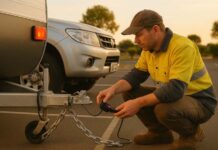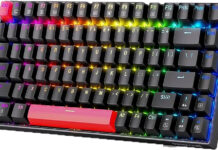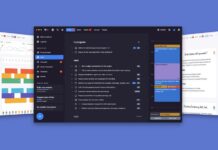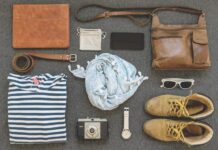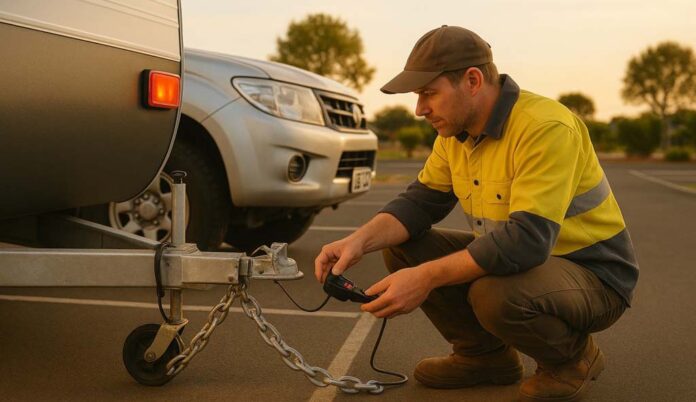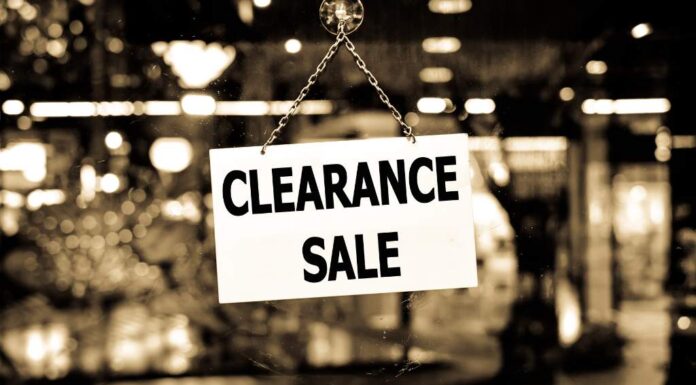Hitting the road with a caravan should feel easy and relaxed. A little prep before you leave can prevent the most common headaches like sway, blowouts, brake fade and loose gear. This guide helps you establish simple habits that keep you safer and less stressed on every trip.
We have boiled it down to five practical tips that fit real Aussie conditions. You will learn how to choose the right setup, pack for balance, keep the running gear in shape, complete a smart pre-drive check, and drive and set up with calm margins.
What this guide covers:
- Match your rig: Pick a caravan and tow vehicle combo that suits your route and weight limits.
- Pack and weigh right: Load low, secure everything, and confirm your numbers.
- Maintain running gear: Tyres, brakes and bearings need regular attention.
- Hitch and visibility checks: A quick routine stops small issues becoming big ones.
- Drive and set up safely: Smooth inputs on the road and tidy practice at camp.
Use these steps before each journey. Whether you are heading up the coast for a weekend or crossing the country for weeks, they will help you travel with confidence.
1) Match Your Rig to Your Tow Vehicle and Route
Safety starts before you hitch up. The caravan or camper needs to suit your vehicle and the places you plan to drive. Give yourself margin so the combo feels calm and controlled, not right on the limit.
Know your numbers
- Confirm your vehicle limits: GVM, GCM, maximum tow rating, and maximum tow ball mass.
- For the trailer, note tare, ATM, and payload.
- Aim for a tow ball load of around 8% to 12% of the loaded trailer weight for stability.
Terrain and distances
- Steep hills, corrugations and unsealed detours put extra load on brakes, tyres and bearings.
- If your route is remote or hilly, choose a lighter van or a stronger tow vehicle to keep stress down.
Braking and stability features
- Fit and test an electric brake controller.
- Use a rated breakaway system and consider electronic stability control for the trailer if available.
- Ensure that wiring, plugs, and battery support these systems properly.
Choosing a style of rig
- When comparing the best motorhomes for sale, look for integrated safety technology, high-quality tyres, and a solid service history.
- If you prefer towable options, many small camping trailers for sale pair well with medium SUVs, are easier to reverse, and reduce strain when loaded correctly.
Goal
- A balanced, legal, low-stress setup with a comfortable power to weight ratio and safety features that match the way you travel.
2) Pack Smart and Confirm Your Weights
Poor loading is the quickest way to cause sway and weak braking. Pack with balance in mind, then prove it with real numbers. A tidy load that sits low and central will track straighter and stop better.
Load low and close to the axles
- Put heavy gear on the floor near the axle line.
- Keep light items up high and at the ends. Avoid stacking weight at the very rear where it acts like a lever.
Balance left to right
- Spread weight evenly across both sides to prevent a lean.
- A level caravan brakes more evenly and keeps tyre wear predictable.
Strap it all down
- Use tie-downs, cargo nets and non-slip mats so bins and boxes cannot move.
- Lock drawers and latches. Loose gear can become a projectile in a sudden stop.
Manage water and gas wisely
- Water is heavy. Only travel with what you need for the first leg, then top up later.
- Keep gas bottles in date, upright, capped and properly strapped in a ventilated compartment.
Confirm your numbers at a weighbridge
- Record front and rear axle weights, caravan axle group, total combination, and tow ball mass.
- Aim for a tow ball load in the 8 to 12 percent range of the loaded trailer weight for stability.
- If anything is close to a limit, repack and re-weigh until you have safe margins.
Goal
- A stable, legal rig that tracks straight, shares the load evenly and stops predictably in all conditions.
3) Keep Tyres, Brakes, and Bearings Road-Ready
Your running gear does the hard work. Treat it like a safety system, not an afterthought. A few simple checks before and during a trip can stop small issues from turning into a roadside drama.
Tyres
- Replace tyres that are 5 to 6 years old or showing cracks, flat spots or uneven wear.
- Set cold pressures for the load you are carrying. Recheck at the first fuel stop and each morning.
- Inspect sidewalls for cuts and bulges. Check the spare, valve caps and your jack kit.
- Torque wheel nuts before every departure and again after any wheel change.
Brakes
- Test the electric brake controller in a quiet area. Set the gain so the van helps slow the combo without grabbing.
- Inspect pads or shoes and the drums or rotors. Look for glazing, scoring or contamination.
- Confirm the breakaway system works and the cable is clipped to the tow vehicle, not the hitch.
- Check wiring and the trailer plug for loose pins, corrosion or damaged insulation.
Bearings and hubs
- Service bearings at the recommended intervals or sooner after water crossings and long hot runs.
- At fuel stops, feel the hubs carefully. Excess heat or a burnt smell means you need to investigate.
- Carry spare bearings, seals, split pins, dust caps, quality grease and the tools to change them.
- Keep a clean tarp, rags and gloves so you can work safely on the roadside.
Suspension
- Look for leaking shocks, worn bushes or broken leaf springs.
- Check U-bolts and pivot hardware for movement. On independent setups, inspect arms and bolts for play.
- If you see uneven tyre wear, have the alignment checked and fix the cause before the next big run.
Goal
- Prevent the failures that strand travellers: blowouts, hot hubs and weak braking. A few minutes of care gives you a safer, smoother trip.
4) Do a Proper Hitching and Visibility Check Every Time
Most roadside dramas come from missed steps. A simple pre-drive routine makes the checks automatic and keeps your rig under control from the first metre.
Hitching
- Seat the coupling fully, insert the pin or lock, then wind the jockey wheel up to confirm it is latched.
- Cross the safety chains under the drawbar and attach with rated shackles.
- Clip the breakaway cable to the tow vehicle itself, not to the chain or hitch.
Electrics and lights
- Plug in firmly and check for a clean, tight fit.
- Test indicators, brake lights, tail lights and reverse lights.
- If anything flickers, clean the plug, reseat the connector or repair the wiring before you roll.
Mirrors and view
- Fit towing mirrors so you can see the full length of the van and the next lane.
- Adjust until you can watch the trailer wheels and the traffic behind you.
- Clear the rear camera lens if you have one.
Doors, hatches and awnings
- Latch and lock all doors, hatches and drawers.
- Secure the step, wind the awning in, lower antennas and close vents if required.
- Inside the van, stow loose items so nothing can shift.
Inside the tow vehicle
- Set the brake controller to your usual starting gain and keep the manual override within reach.
- Reset the trip meter, secure loose gear, load maps and plan your first fuel and rest stops.
- Keep water, sunnies and a torch handy for quick checks on the road.
Goal
- Leave with full control and clear visibility, with nothing dragging, swinging or coming loose once you are underway.
5) Drive Calmly and Set Up Camp Safely
How you drive and how you set up at the end of the day matter just as much as the gear you bring. Keep your pace steady, leave room for errors, and finish each leg with tidy habits that make the site safe and comfortable.
On the road
- Speed and space: Keep speeds modest and leave at least a four-second gap to the vehicle ahead. Your outfit is heavier and will need more room to pull up.
- Smooth inputs: Use gentle throttle, brake early, and steer in wide, steady arcs. Smooth driving keeps the trailer settled and reduces stress on brakes and tyres.
- Managing sway: If sway starts, hold the wheel straight and ease off the throttle. Use the manual trailer brake on your controller to pull the rig back into line, then check load balance and tyre pressures at the next stop.
- Hills and wind: Select a lower gear before descents and use engine braking to control speed. Give trucks plenty of room and expect bow waves and suction as they pass. If crosswinds build, slow down or pause until it eases.
- Fatigue: Share the driving when you can and stop at least every two hours. Drink water, stretch, and avoid dawn and dusk in wildlife-heavy areas.
At camp
- Choose a level site: Level side to side before unhitching, then chock wheels front and back. Lower the jockey wheel and use stabilisers for support, not lifting.
- Gas and electrics: Check hoses and regulators with soapy water for leaks. Keep gas bottles upright and away from heat. Use a tested RCD on 240 V leads, fully unwind cables, and keep joins off the ground.
- Ventilation and heaters: Keep vents clear and use approved heaters only. Never run generators or BBQs inside annexes or near windows due to carbon monoxide risk.
- Fire safety: Keep a dry-powder extinguisher and fire blanket where you can reach them fast. Cook away from awning fabric and kids’ play zones, and set a simple rule that children stay clear of the kitchen area.
Goal
- Arrive fresh, avoid close calls on the way, and sleep easy with a neat, safe setup.
Conclusion
Caravan safety is a habit, not a single checklist. Start with the right rig for your vehicle and trip, pack with balance, service your running gear, and do your pre-drive routine. Then, drive with calm margins and set up carefully. Whether you are eyeing the best motorhomes for sale for longer tours or comparing small camping trailers for sale for weekend escapes, the same rules apply: stay within limits, fix small issues early, and give yourself time and space. The reward is a smoother trip and a better holiday for everyone on board.





